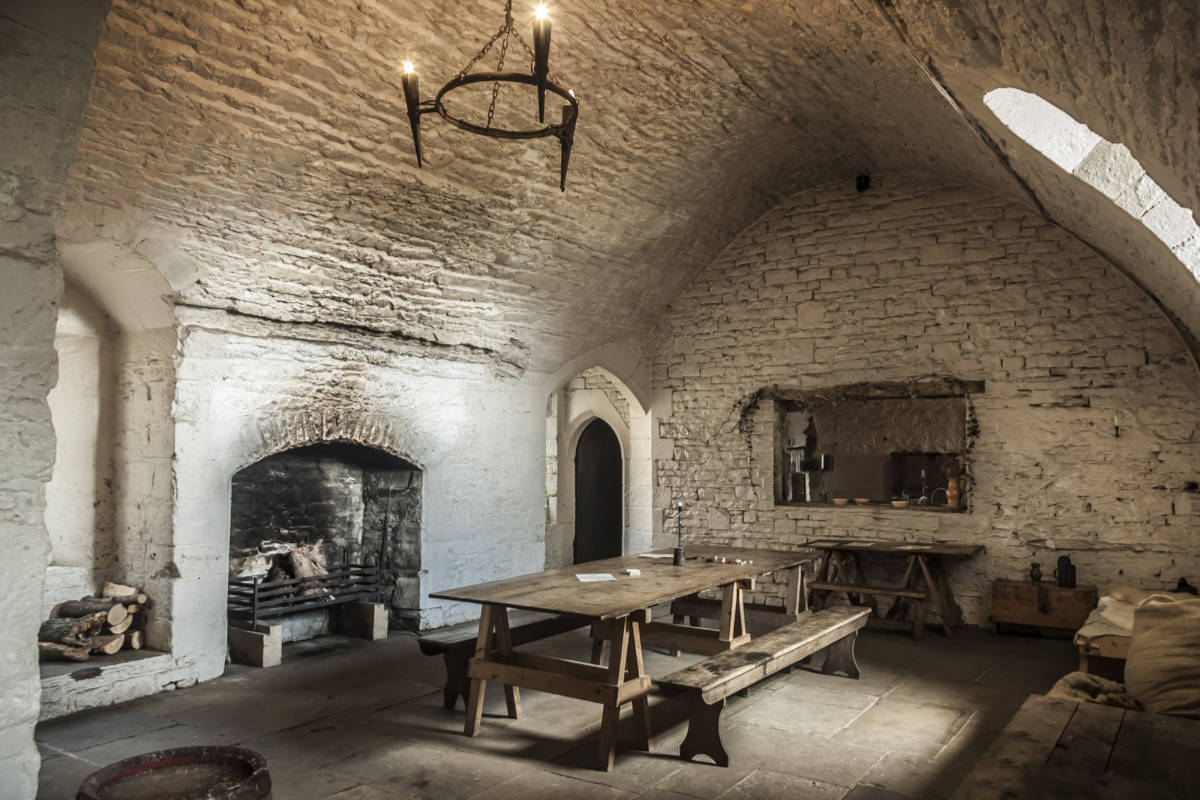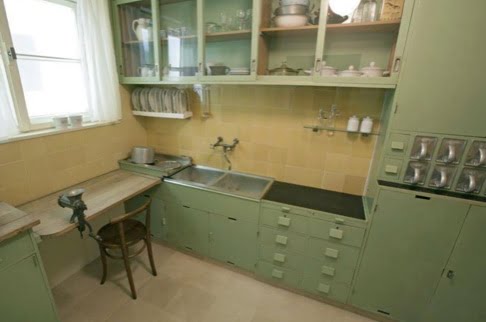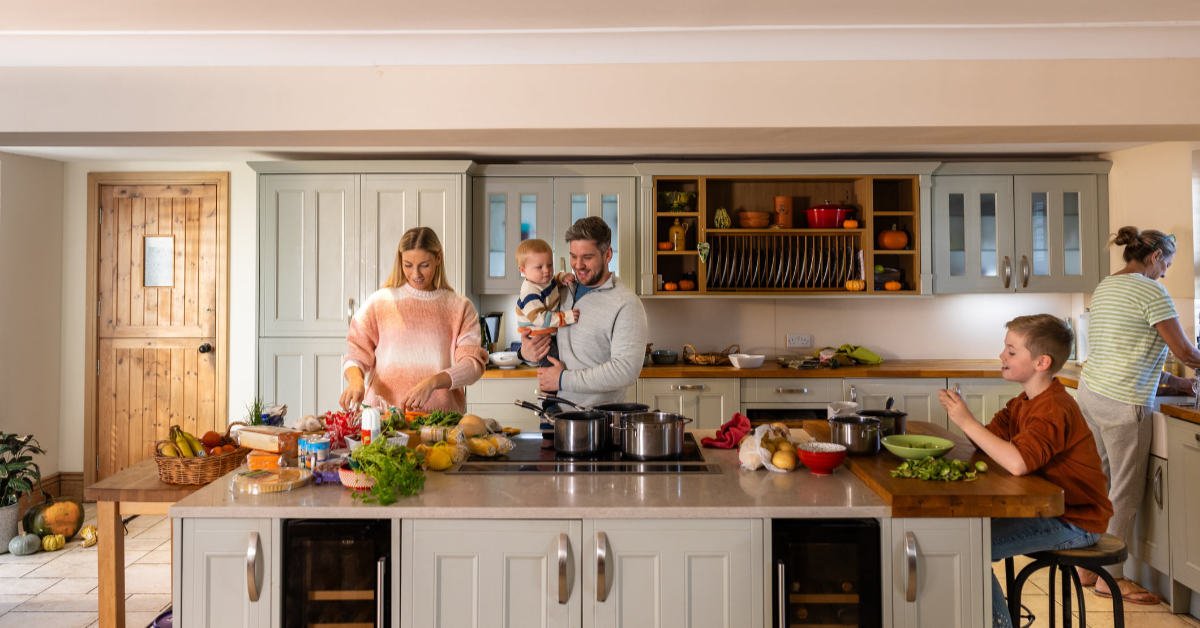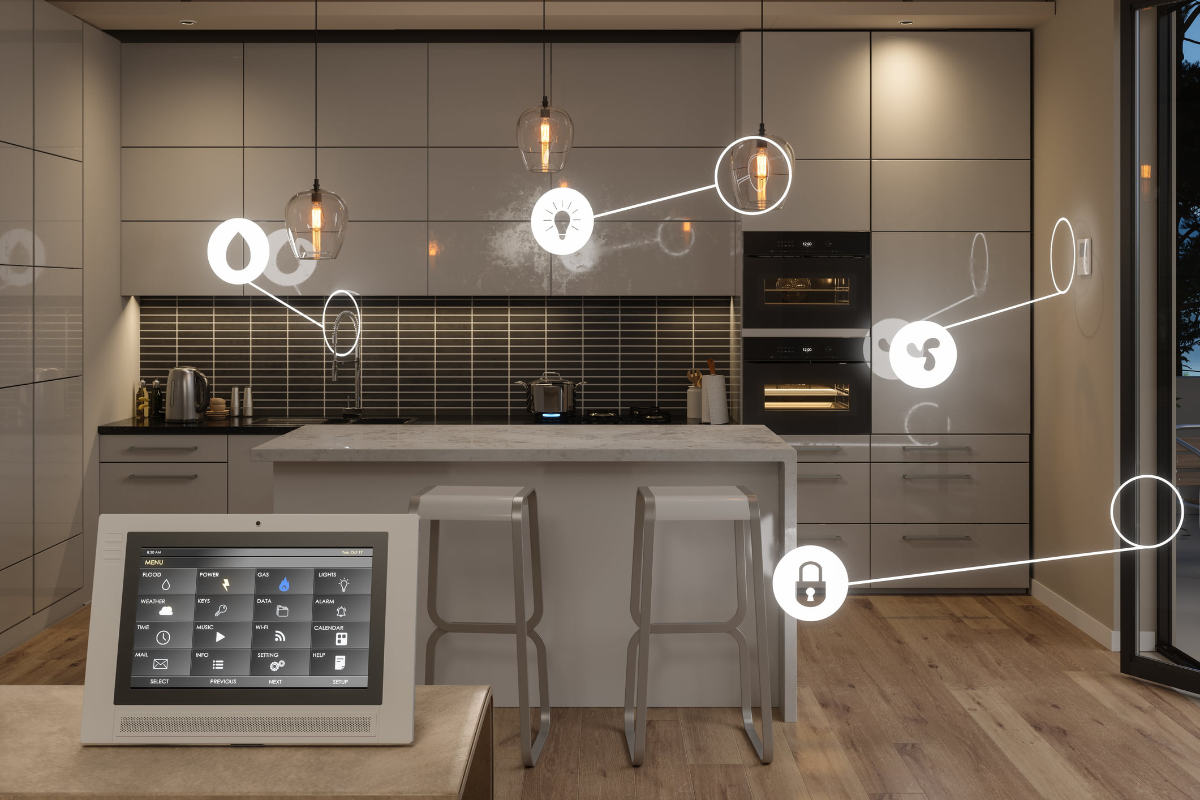The evolution of kitchen design has been fascinating throughout history. Once utilitarian spaces hidden from the public eye, kitchens transformed from humble hearths to sleek, modern culinary spaces.
Keep reading to discover the defining moments in kitchen design, reflecting technological advancements, societal changes, and shifting lifestyles.
Ancient Beginnings: Hearth and Home
In ancient times, the heart of the home was the hearth. Kitchens were basic, centered around an open flame for cooking and warmth.
People made early hearths from clay or stone to enclose and contain the fire. In larger homes, deep hearths cooked food in pots placed inside the fire. There were also spits and hooks to cook large pieces of meat.
Builders also constructed kitchens near food sources, often next to vegetable gardens, orchards, and chicken coops.
In some cases, they even built ancient kitchens above pig sties! Pigs served as an important source of protein. People could easily dispose of kitchen scraps by throwing them down to the pigs. They then used the pigs’ waste as fuel for their fires.
Medieval Innovation: From Hearth to Stove
Kitchens began to evolve during the medieval period with the introduction of enclosed fireplaces, a revolutionary shift from the open hearth.
This design innovation improved safety and allowed for more precise control over cooking temperatures.
The introduction of the first rudimentary “stove” also brought other such innovations as the chimney, which improved ventilation.
This improved safety and air quality brought kitchens closer to the living quarters than ancient kitchens.

The American Stove Before the Industrial Revolution
Throughout the world, people were starting to create ways to contain and control open flames.
In America, Benjamin Franklin invented one of the first stoves. In 1740, he designed the “Pennsylvania fireplace,” which is the foundation of our modern stove.
The Franklin stove used a grate to burn wood and had sliding doors to control the flow of air through it. People could even house the stove in a large fireplace or place it in the middle of a room connected to a chimney.
This early stove required one-quarter the quantity of fuel as a regular fireplace. It also raised the room temperature more quickly.
Throughout North America, the Franklin stove enjoyed widespread adoption, warming farmhouses, city residences, and even frontier huts.

Industrial Revolution: Enter the Modern Kitchen
The 19th century witnessed the impact of the Industrial Revolution on kitchen design. The modern kitchen was born with the mass production of stoves, other kitchen appliances, and cooking utensils.
The separation of cooking and living spaces also became more pronounced, reflecting societal changes and the rise of specialized kitchen tools.
As more homes gained access to running water and gas, the layout of the kitchens also evolved. Kitchen designs incorporated sinks, stoves, and storage cabinets.
Mid-20th Century: The Rise of Efficiency
A wave of technological advancements transformed kitchen design post-World War II.
The introduction of built-in cabinets, easy-to-clean surfaces, and innovative storage solutions epitomized the streamlined efficiency of the mid-20th-century kitchen. Functionality met aesthetics, marking a turning point in design philosophy.
Notable designers like Frank Lloyd Wright emphasized the integration of form and function, paving the way for practical and aesthetically appealing kitchens. He also mastered working with nature and inviting it into his spaces.
Another architect who altered kitchen design during this time was Margarete Schutte-Lihotzky. In the 1920s, she created the Frankfurt Kitchen. This groundbreaking concept focused on efficiency and ergonomics, setting the stage for modern kitchen layouts.

The Frankfurt kitchen was born out of necessity when they were rebuilding after the war. Schutte-Lihotzky was tasked with making small yet workable kitchens for new apartment housing and parts of this concept can still be seen in modern kitchens today.
Also Read: 8 Mid-Century Modern Kitchen Design Ideas (You’ll Love)
Late 20th Century: The Open Concept Emerges
The open-concept kitchen gained popularity in the latter half of the 20th century.
People torn down walls, seamlessly integrating kitchens with living spaces. This shift reflected a desire for communal living and blurred the lines between cooking and entertaining.
This open concept is still prevalent in most new construction, often tying the two rooms together.
For example, the boundary lines between kitchens and living areas are less distinct. Artwork and plants also fill kitchens and beverage stations nestled in the corners of living spaces.

21st Century: Smart Kitchens for Smart Living
In the 21st century, technology has become a defining factor in kitchen design. Smart appliances, integrated IoT (Internet of Things) devices, and sustainable materials took center stage.
The kitchen evolved into a hub of innovation, catering to the needs of a tech-savvy and environmentally conscious society.
Today, kitchen design brings a commitment to sustainability and a focus on personalization. Recycled materials, energy-efficient appliances, and customizable layouts are at the forefront.
The kitchen is no longer just a place for preparing meals; it reflects individual style and values.
Also Read: Modern Kitchen Designs With Beautiful Black Quartz Countertops

Final Words
In tracing the evolution of kitchen design, it becomes evident that each era has left its mark, shaping how we approach cooking and communal living.
From the simplicity of ancient hearths to the smart kitchens of the present, the kitchen is the center of our home and a reflection of our societies.